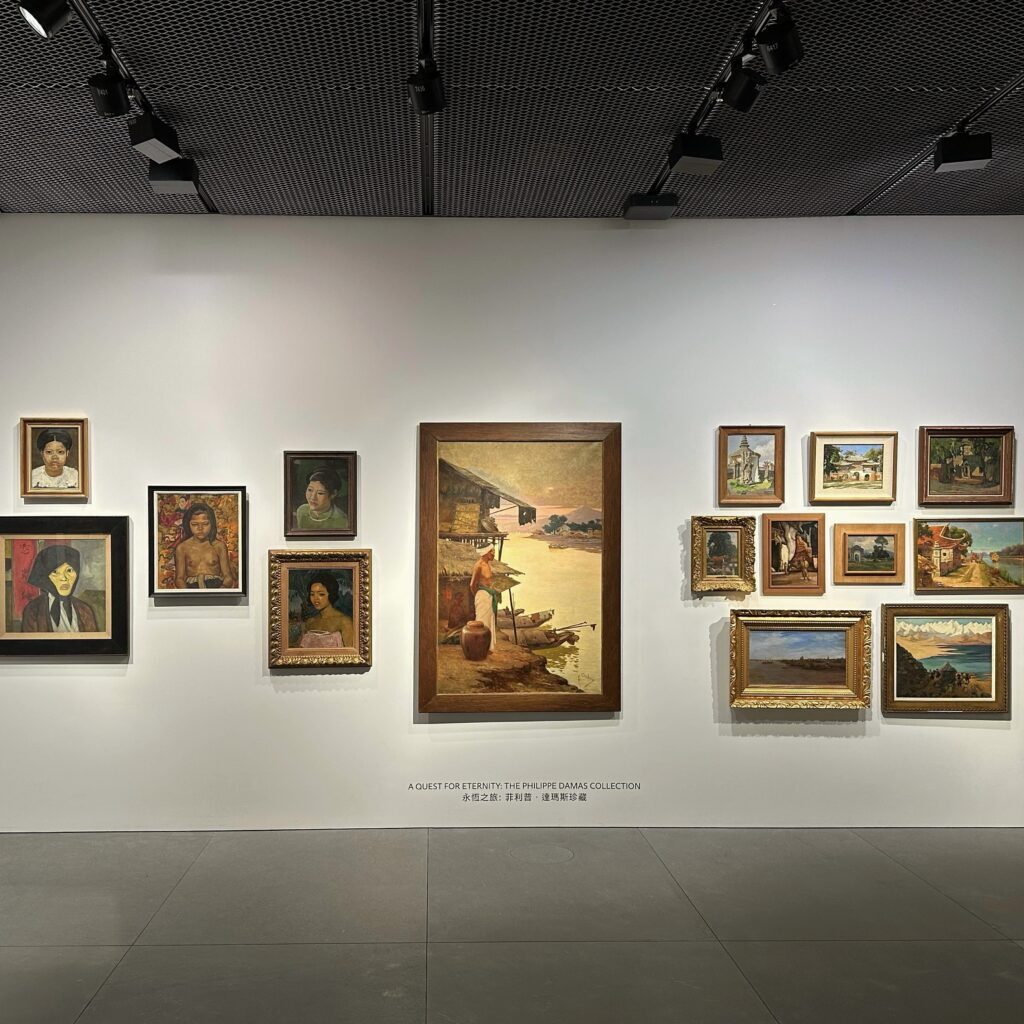
Albert Cézard (France, 1869-circa 1916)
Le Thé (The Tea)
signed ‘A.Cezard.’ (lower right)
oil on canvas
210 x 180 cm. (82 5/8 x 70 7/8 in.)
Private Collection, Belgium
As the saying goes, we only travel for love or out of necessity. The painter-travellers proved no exception when they left their homelands and passed through Vietnam. Taking advantage of the increased interaction between France and the Far East in the 17th and 18th centuries, these travellers, who were neither servicemen nor missionaries, returned home from Asia with stories and illustrations. These travellers were the first to inspire the French government to set up painting scholarships for those who were prepared to travel to the colonies, with the agenda of bringing closer the metropolis to its empire. The Société des Peintres Orientalistes (Society of the Orientalist Painters) and the Société Coloniale des Artistes Français (Colonial Society of the French Artists) respectively created an annual award to encourage recognised artists to travel to the new territories by covering all their expenses while journeying abroad. In return, they were asked to present the body of their work and share their vision of the new territories and the fascinating civilisations they encountered: in this regard, intellectual globalisation, in fact, preceded economic globalisation.
Many excellent painters of French descent, such as Albert Cézard, Gaston Roullet, Marie-Antoinette Boullard-Devé, Jean Bouchaud, Charles Fouqueray, Paul Jouve, André Maire and Jean Launois, among others, travelled to the Orient, but each of them approached the visualisation of Asia and Vietnam in particular very differently. A number of these painters went on to become illustrators for travel books and novels about Vietnam.
Albert Cézard, amongst all aforementioned, would have advanced the representation of Vietnam, the most as an illustrator. The present painting, Le Musicien Vietnamien, is an exceptional example, firstly, in terms of its size and complete presentation, with an original wooden frame sculpted with great adroitness, giving the painting an architectural quality.
The liveliness of the painting and the enchanting character of the locale chosen is heightened by the high contrast between colours in the painting, as well as an almost exotic reconstruction of a quasi-imaginary world. The wide breadth of the river and its boats, matched by the opulence of the flowers and Chinese style blue and white vase, the enchanting lanterns and dramatic curtain, and the almost theatrical dressing of the musician, create a picture more than what Vietnam really is. Cezard, in the romantic fashion of an early 20th-century European sojourner to the Far East, sought to depict the total extravagance and grandiloquence of a luxurious life in the Far East and achieved it in the present painting.
Jean-François Hubert
Senior Expert, Vietnamese Art










